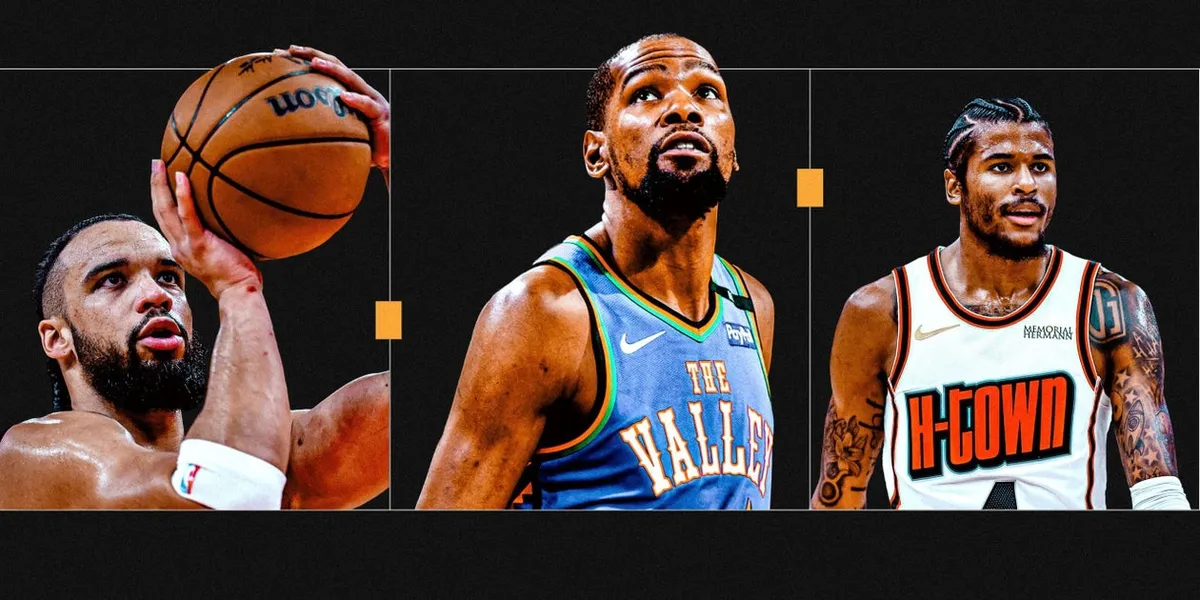
When it comes to the intricacies of an NBA seven-team trade, the process can be likened to the old adage about eating an elephant: one bite at a time. Drawing from my experience as the vice president of basketball operations for the Memphis Grizzlies from 2012 to 2019, I can attest that a trade of this magnitude typically evolves from a series of smaller transactions. Let's delve into the mechanics that make such a complex trade possible.
Constructing a multi-team trade can be significantly more beneficial for an NBA team than executing sequential trades. This is primarily because the trade exception available during a “simultaneous trade” is often larger than the one generated by sequential deals, even if the second trade occurs only moments after the first. For instance, during the 2016 trade deadline, the Grizzlies arranged to send Courtney Lee to the Charlotte Hornets in exchange for Brian Roberts, P.J. Hairston, and two second-round picks. However, since the incoming players’ salaries were lower than Lee's, it allowed us to legally include more money in the trade, owing to the available room under the luxury tax.
If we had executed a straightforward Lee-for-Roberts trade, the trade exception would have only accounted for the salary difference, approximately $1.6 million at that time. In contrast, executing the trade simultaneously allowed us to take back up to 150% of Lee's salary. To maximize the deal, we included the Miami Heat, who were looking to reduce payroll due to the luxury tax. By sending Roberts to Miami in exchange for Chris Andersen, we successfully crafted a three-team trade that met the league's “touching” requirements.
Multi-team trades can expand rapidly once the groundwork is laid. A prime example of this was the recent seven-team deal involving Kevin Durant, which originated from five different trades finalized during the draft week. While theoretically, these trades could have occurred sequentially, coordinating them as a multi-team trade simplified the process for all parties involved.
In a similar vein, a year prior, Klay Thompson was signed and traded to the Dallas Mavericks in a six-team deal, where each transaction in the chain was designed to capitalize on the trade exceptions generated by previous trades. Additionally, the trade deadlines and the beginning of free agency are pivotal moments when these expansive deals often materialize.
During the offseason, teams have ample time to negotiate and refine deals, which can lead to the inclusion of various transactions to optimize trade exceptions. Conversely, as teams approach the trade deadline, there is typically a sense of urgency that necessitates the execution of simultaneous trades. For example, the Houston Rockets negotiated a straightforward deal with the Phoenix Suns to send multiple assets, including Dillon Brooks and Jalen Green, in exchange for Durant. However, they recognized the opportunity to enhance the trade by adding another contract when free agency commenced.
By bringing the Atlanta Hawks into the fold for a sign-and-trade involving Clint Capela, the teams met the required conditions for a multi-team trade. This creative maneuvering is essential to ensure compliance with the league's regulations, particularly the requirement for each team to provide and receive consideration.
As the Suns began utilizing the second-round picks acquired from the Rockets, the trade expanded further, involving teams like the Brooklyn Nets, Minnesota Timberwolves, and Los Angeles Lakers. Each of these teams participated in a series of exchanges that allowed for a seamless integration of multiple transactions, demonstrating the complexity and interconnectedness of modern NBA trades.
Interestingly, Memphis was not a part of this expansive trade, raising questions about why they didn’t join the fray. It appears that keeping the option open for future multi-team trades was a strategic move for at least one of the involved teams. This approach mirrors previous dynamics seen in the Thompson deal, showcasing the evolving landscape of NBA transactions.
As the NBA landscape continues to evolve, we can expect to see an increase in the frequency of multi-team trades. Unlike the recent seven-team deal, future transactions may involve more active players, reflecting a trend towards more dynamic and player-centric deals. With the excitement of the offseason on the horizon, NBA fans should prepare for the potential of even more intricate trades in the coming seasons.